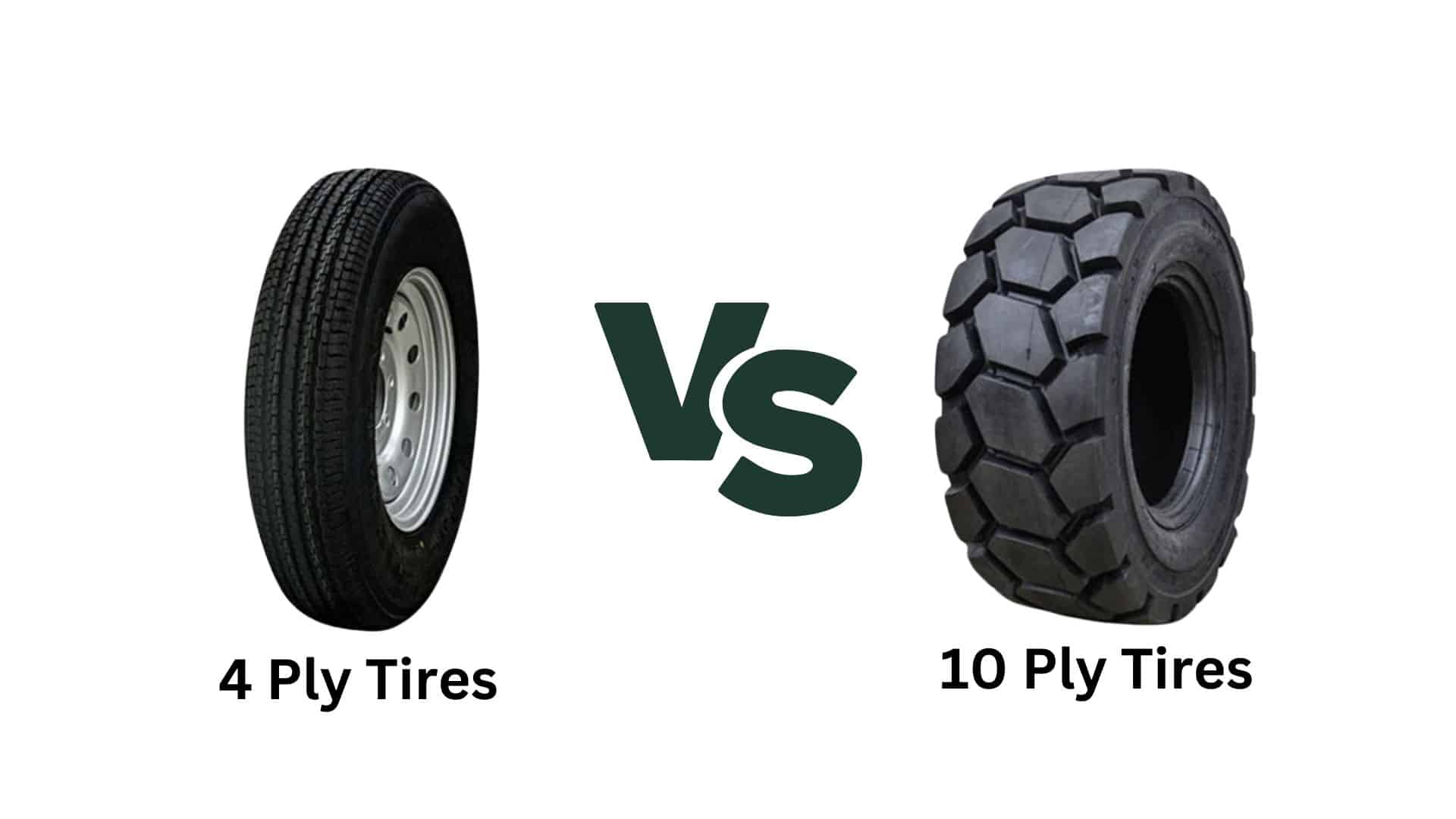Knowing which type of tire is right for your vehicle can be challenging. Four-ply tires are a common option, but are they the best choice for you?
While they offer some advantages, like a more comfortable ride and lower noise levels than higher-ply tires, they also have drawbacks.
4-ply tires may not provide the durability and load capacity needed for heavy-duty or off-road driving.
This article will examine the pros and cons of 4-ply tires to help you decide if they meet your needs.
Whether you’re a daily commuter or an occasional off-roader, understanding the advantages and disadvantages of 4-ply tires can save you time, money, and headaches.
What Are 4 Ply Tires?
4-ply tires have four layers of rubber-coated fabric cords that reinforce the sidewall and tread area.
These layers work together to strengthen and support the tire’s structure.
These tires are often used on light-duty vehicles for everyday driving in urban and suburban settings.
They are a popular choice for passenger cars, small SUVs, and light trucks that don’t require heavy-duty tires for towing or off-road use.
Advantages of 4 Ply Tires
4-ply tires strike a good balance between durability, stability, and affordability.
They are designed for light-duty vehicles and perform well in city driving conditions.
Decent Durability
These tires offer good protection against daily wear and tear.
The multiple layers in the tire’s construction help resist punctures and cuts.
They can handle rough roads and last longer overall.
Enhanced Stability
4-ply tires improve vehicle handling and safety on the road.
Extra reinforcement in the sidewalls reduces flex, increasing stability at higher speeds.
This leads to better handling and cornering, making driving safer and more responsive.
Fuel Efficiency
These tires are an economical choice for regular city driving.
The lighter weight of 4 ply tires reduces the vehicle’s overall mass.
This helps improve fuel economy compared to heavier ply tires, saving money on gas.
Lower Cost
4-ply tires are a budget-friendly option for cost-conscious drivers.
They are typically less expensive than higher-ply tires while still providing good quality.
They are a great choice for people who need reliable tires at an affordable price point.
Reduced Noise
These tires enhance driving comfort by reducing road noise.
The flexible tire composition helps absorb vibrations for a quieter ride.
Soft compound materials also contribute smoother driving experience on different road surfaces.
Disadvantages of 4 Ply Tires
While 4-ply tires offer several benefits, it’s important to understand their limitations compared to alternatives like 10-ply tires.
By recognizing these disadvantages, you can make a well-informed decision when selecting tires for your vehicle and specific needs.
Reduced Load Capacity
4-ply tires have fewer layers in their construction, which limits their ability to support heavy loads.
This makes them unsuitable for heavy-duty tasks such as towing trailers or hauling large cargo.
If you frequently engage in these activities, 4-ply tires may not provide strength and support.
Lower Traction on Uneven Terrain
The design of 4-ply tires offers less grip and stability when driving on non-urban terrains like gravel roads or off-road trails.
This decreased traction can affect vehicle performance and safety in challenging driving conditions or adverse weather.
If you plan to take your vehicle off-road or live in an area with rough roads, 4-ply tires may not provide optimal traction.
Ride Comfort
Due to their stiffer sidewalls, 4-ply tires may not absorb road imperfections as effectively as other tire types.
This can result in a bumpier and less comfortable ride, especially over long distances or uneven surfaces.
If a smooth, cushioned ride is your top priority, 4-ply tires may not be the best choice.
Comparative Analysis of 4 Ply Tires with 10 Ply Tires

Less durable in off-road and heavy-duty situations.
Vulnerable to punctures and cuts.
More durable with additional layers for extra protection.
Better resistance to wear, cuts, and punctures.
Adequate for urban roads.
Offers less traction on uneven terrain.
Deeper tread and stronger construction.
Superior grip and stability on rough surfaces like mud, gravel, and uneven terrain.
Lower initial cost compared to 10 Ply tires.
More affordable upfront but less suitable for demanding driving.
Higher initial cost but offers long-term savings.
More cost-effective for heavy vehicles and challenging conditions.
Conclusion
Understanding the advantages and disadvantages of 4-ply tires is crucial for making an informed decision when selecting the right tires for your vehicle.
While 4-ply tires offer a balance of durability, stability, and affordability for light-duty cars and everyday urban driving, they may not be the best choice for heavy-duty tasks or off-road adventures.
It’s important to consider your specific needs and driving conditions before purchasing.
If you frequently deal with rough terrain, tow heavy loads, or prioritize a smoother ride, exploring alternatives like 10-ply tires might be a better fit.
Ultimately, weighing the pros and cons of 4-ply tires will help you find the perfect balance of performance, comfort, and cost-effectiveness for your unique driving requirements.
Frequently Asked Questions
Are 4-Ply Tires OK for Off-Road?
4-ply tires are not ideal for off-road driving.
They lack the traction, durability, and puncture resistance for rough terrain.
10-ply tires are better suited for off-roading.
What Is 4 Ply Used For?
4-ply tires are commonly used for driving on paved roads in light-duty vehicles like passenger cars, small SUVs, and light trucks.
How Does Ply Affect Tires?
The number of plies in a tire affects its strength, durability, and load capacity.
More plies mean a stronger, more robust tire that can handle heavier loads and tougher conditions.


